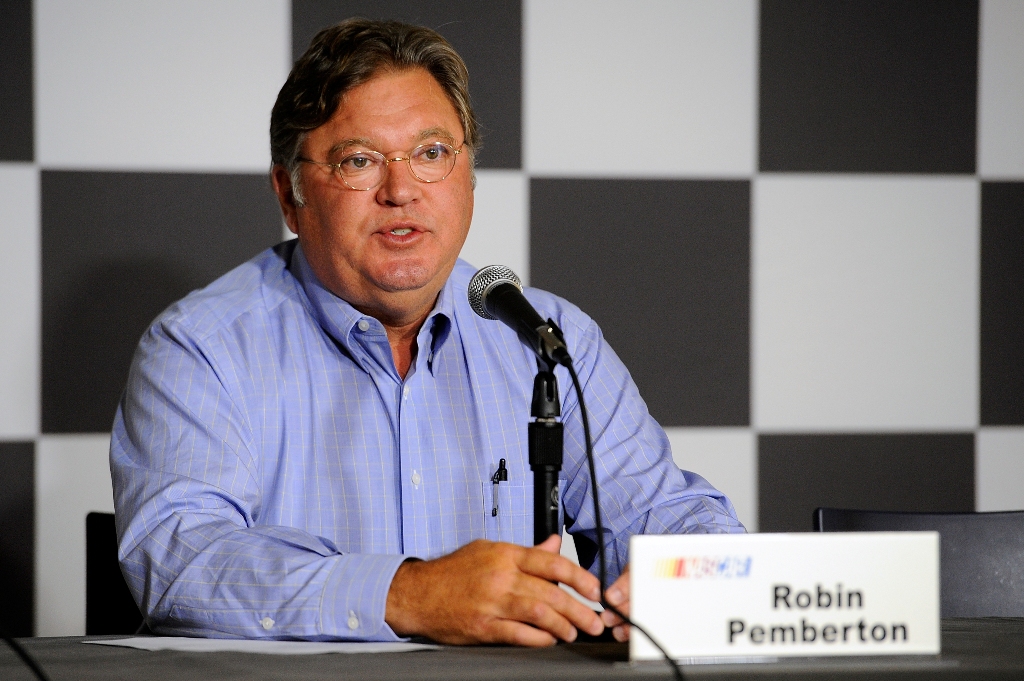
Photo Credit: Jared C. Tilton/Getty Images
On Friday morning at Michigan, NASCAR VP of Competition Robin Pemberton formally announced a new rule, beginning this weekend’s events, for all levels of NASCAR sanctioned racing. The basic premesis of rule 9-16 – the driver must stay in their car, unless they’re on fire. The full rule as printed in the rulebook is available at the end of this article, per NASCAR’s press release.
Despite incidents where drivers have gotten out of their car before to display their displeasure with fellow drivers, while via hand gestures or throwing items like their helmet, Pemberton notes that this has always been part of the rulebook. Though moving forward, this is now a formal rule.
“Really we’re formalizing rules that have been there,” he commented. “It’s reminders that take place during drivers meetings with drivers about on-track incidents. We’re just formalizing this and it’s something that we worked on this week.”
The formalizing of the rule comes on the heels of an incident that took place last week at a non-NASCAR sanctioned race at a dirt track in New York involving Kevin Ward Jr. and Tony Stewart. During a sprint car event last Saturday night at Canandaigua (N.Y.) Motorsports Park, Ward Jr. was spun out by Stewart. He then got out of his car to display his displeasure, when Stewart’s car would make contact with Ward, sending him sliding across the track. Ward Jr. would be transported to hospital, where he was pronounced dead upon arrival.
“Through time you have to recognize when you get a reminder or tap on the shoulder, something that may need to be addressed,” Pemberton said. “This is one of those times where we look outside our sport and we look at other things, and we feel like it was time to address this.”
As to the penalties that could occur for drivers that break the rules, Pemberton says that “they’ll be addressed according to each situation”.
Section 9-16 – on-track incident procedure:
During an event, if a racecar is involved in an on-track incident, and/or is stopped on or near the racing surface, and unable to continue to make forward progress, unless extenuating circumstances and conditions exist with the racecar, example, on fire or smoke in the cockpit, et cetera, the driver should take the following steps:
Shut off electrical power, and if the drivers is uninjured, lower the window net.
Do not loosen, disconnect or remove any driver personal safety equipment until directed to do so by safety personnel or a NASCAR official.
After being directed to exit the racecar, the driver should proceed either to the ambulance or other vehicle or as otherwise directed by safety personnel or NASCAR official.
At no time should a driver, crew member or members approach any portion of the racing surface or apron.
At no time should a driver, crew member or members approach another moving vehicle.
All vehicles not involved in the incident or that are able to continue afterwards should slow down to a cautious speed as outlined in section 10-4, yellow flag rules.
Use extreme care as they approach an incident scene and follow any direction given by safety personnel or NASCAR officials.
Cars in line behind a safety car should not weave or otherwise stray from the line in the vicinity of an accident.





RT @OnPitRoad_: NASCAR formalizes regulations, saying drivers must stay in their car – unless on fire by @ladybug388 http://t.co/vMGbtqWl4s
RT @OnPitRoad_: NASCAR formalizes regulations, saying drivers must stay in their car – unless on fire by @ladybug388 http://t.co/vMGbtqWl4s